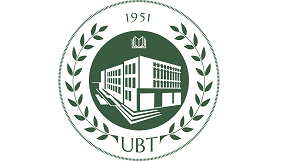RIGERS BAKIZ1,2,3*
|
1 Department of Aquaculture and Fisheries, Faculty of Agriculture and Environment, Agricultural University of Tirana, Koder-Kamez, 2 Albanian Center for Environmental Protection and Sustainable Development, Tiranë, Albania 3 Albanian Young Academy – Academy of Sciences of Albania, Tiranë, Albania * Corresponding author; E-mail: rigers.bakiu@ubt.edu.al Abstract In Albania, the most produced species by the aquaculture sectors are represented (at a decreasing order) by gilthead seabream, European seabass, rainbow trout, carp species and Mediterranean mussels. The production of gilthead seabream and European seabass is realized by using the marine cage production systems along the south Adriatic and Ionian coasts of Albania. Like everywhere in the Mediterranean basin, the climate change effects are becoming evident in the marine aquaculture farms, according to the representatives of the aquaculture companies in Albania. Climate change poses increasing challenges to aquaculture, resulting in the need to develop appropriate tools to assess these challenges and support decision-making. By using Decision Support Software (DSS) for the Greek Marine Aquaculture, the aim of the presented study is to simulate the effects of climate change (CC) on aquaculture production and associated socio-economic indicators by considering only the European seabass. In addition were performed the calculations of business economics of the farm for Bay of Vlora climate scenario and management options, based on the input values for the various prices and costs. Though it is a study about the marine aquaculture of Albania, all the hypothetical proposed adaptive measures emerged out based on the biological, physiological data of the European seabass and the relative technology applied in northern Greece marine farms. All these proposed adaptiv Keywords: European seabass, Bay of Vlora, simulations, climate change scenarios |
